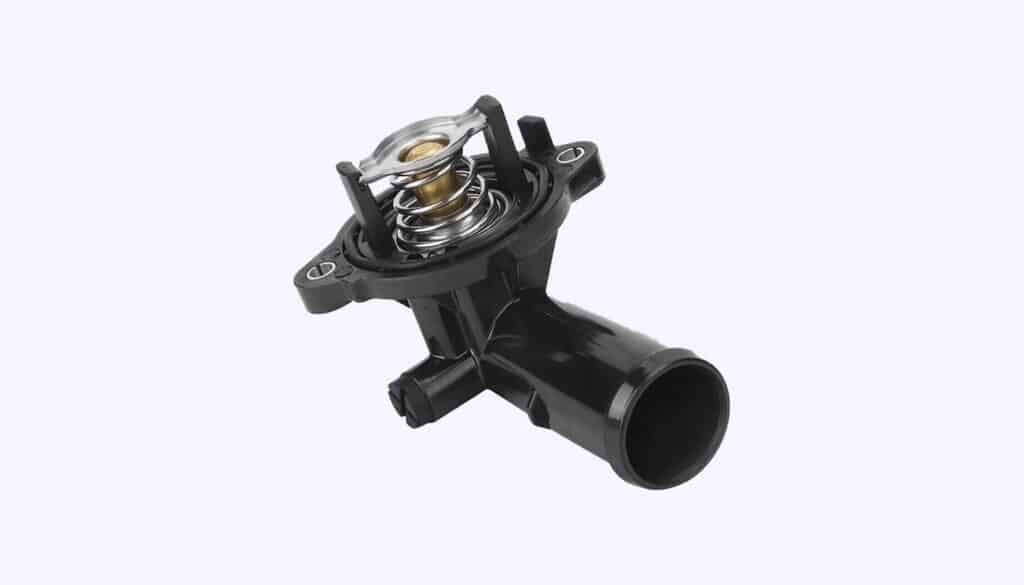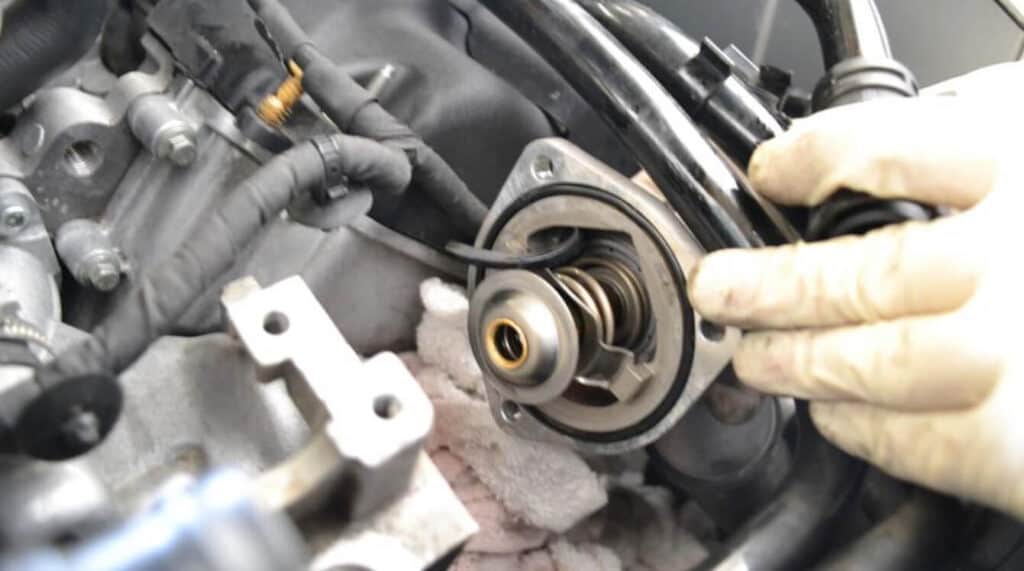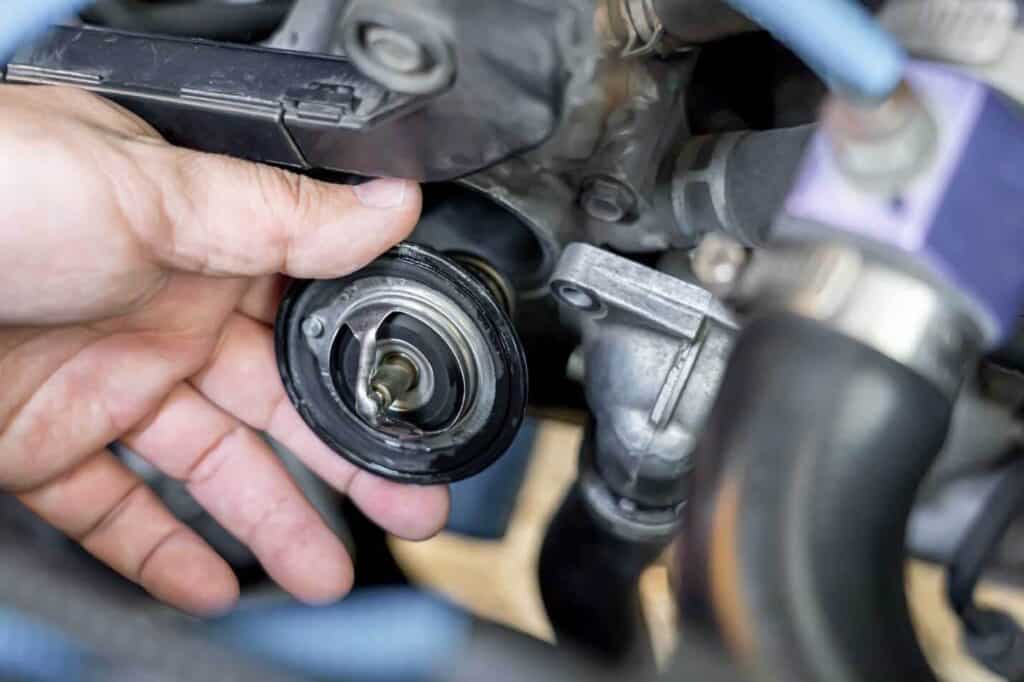Introduction: Keep Your Engine Cool with a Reliable Thermostat Housing
A faulty thermostat housing can lead to inaccurate temperature readings and potential engine damage. In this guide, we’ll cover the importance of a thermostat housing, the cost of replacing one in Canada, and tips for prolonging its lifespan. Let’s get started!
What is a Thermostat Housing?
A thermostat housing is a component that encloses the engine thermostat, which regulates the flow of coolant between the engine and radiator. The housing provides a secure and leak-free environment for the thermostat to function properly.

How Much Will it Cost to Replace a Thermostat Housing in Canada?
• Parts: $50 – $150
• Labor: $100 – $200 (1 to 2 hours)
• Total: $150 – $350
The cost of replacing a thermostat housing in Canada varies depending on the make and model of your vehicle. On average, you can expect to pay between $150 and $350 for parts and labor.
What are the Symptoms of a Faulty Thermostat Housing?
The symptoms of a faulty thermostat housing can vary depending on the nature and severity of the issue. Some common symptoms include:
• Coolant leaks: A cracked, warped, or damaged thermostat housing can cause coolant to leak, often visible around the housing itself or underneath the vehicle.
• Overheating: A faulty thermostat housing can prevent the thermostat from functioning correctly, leading to poor coolant circulation and engine overheating.
• Fluctuating engine temperature: If the thermostat housing is compromised, it can cause the engine temperature to fluctuate erratically, with the temperature gauge moving between hot and cold.
• Poor cabin heating: A malfunctioning thermostat housing can interfere with the proper operation of the heater, leading to insufficient heat being delivered to the cabin.
• Check engine light: In some cases, a faulty thermostat housing can trigger the check engine light to illuminate, often due to temperature sensor issues or poor coolant circulation.
• Decreased fuel efficiency: If the engine is not being cooled efficiently due to a faulty thermostat housing, it may have to work harder and consume more fuel to maintain optimal operating temperature.
How Long Does a Thermostat Housing Last?
A thermostat housing typically lasts between 160,000 and 240,000 kilometers. However, its lifespan can be affected by factors such as engine operating conditions and overall maintenance of the cooling system.
How Does a Thermostat Housing Become Defective?
A thermostat housing can become defective due to several reasons:
• Material deterioration: Over time, the materials used in the construction of the thermostat housing, such as plastic or aluminum, can weaken, corrode, or become brittle. This can lead to the development of cracks, warping, or leaks.
• Gasket failure: The gasket that seals the thermostat housing to the engine block can wear out or become damaged, allowing coolant to leak or air to enter the cooling system. This can compromise the effectiveness of the thermostat and lead to overheating issues.

• Temperature fluctuations: Repeated heating and cooling cycles can cause the thermostat housing to expand and contract, which can eventually lead to cracks, warping, or other damage.
• Mechanical damage: Accidents or impact from road debris can cause physical damage to the thermostat housing, leading to coolant leaks or impaired function.
• Manufacturing defects: In some cases, the thermostat housing may have been manufactured with defects or poor-quality materials, leading to premature failure.
• Improper installation: If the thermostat housing is not installed correctly, such as being over-tightened or misaligned, it can lead to leaks or other issues that compromise its performance.
How Can a Faulty Thermostat Housing Affect Other Systems in the Car?
A faulty thermostat housing can cause:
• Engine overheating: A faulty thermostat housing can lead to coolant leaks or improper thermostat function, resulting in engine overheating, which can cause significant damage to various engine components.
• Reduced fuel efficiency: Poor temperature regulation due to a faulty thermostat housing can negatively impact fuel efficiency, as the engine may not operate at its optimal temperature.
• Increased emissions: Inefficient engine operation caused by a faulty thermostat housing can lead to increased exhaust emissions, potentially causing your vehicle to fail an emissions test.
• Poor engine performance: An improperly functioning thermostat housing can cause the engine to run too hot or too cold, leading to poor performance, power loss, or hesitation during acceleration.
• Potential damage to other cooling system components: A faulty thermostat housing can cause stress on other cooling system components, such as the water pump, radiator, and hoses, which may eventually lead to failure or leaks.
• Triggered check engine light: A problem with the thermostat housing can cause the engine’s computer to detect a cooling system issue, illuminating the check engine light on the dashboard.
Is it Safe to Drive with a Faulty Thermostat Housing?
Driving with a faulty thermostat housing can be risky, as it plays a critical role in maintaining the proper engine temperature. The thermostat housing contains the thermostat, which regulates the flow of coolant between the engine and the radiator. If the housing is damaged, it can lead to coolant leaks or an improperly functioning thermostat, which can result in engine overheating or poor temperature regulation. Overheating can cause significant engine damage, including warped cylinder heads, damaged head gaskets, and even complete engine failure. Furthermore, inadequate temperature regulation can lead to poor engine performance and reduced fuel efficiency.
If you suspect that your thermostat housing is faulty, it’s essential to address the issue as soon as possible to prevent further damage to your engine. Signs of a faulty thermostat housing include visible coolant leaks, engine overheating, fluctuations in engine temperature, and poor engine performance. In some cases, the check engine light may also illuminate, signaling a problem with the engine’s cooling system. To ensure your safety and protect your vehicle’s engine, it’s best to have the thermostat housing inspected and replaced, if necessary, by a qualified mechanic before continuing to drive.
How Can I Make My Thermostat Housing Last Longer?
• Regularly check and maintain your vehicle’s cooling system
• Inspect the thermostat housing for signs of damage or leaks
• Replace the thermostat and gasket when necessary to prevent housing failure

Can a Mobile Mechanic Replace a Thermostat Housing?
Yes, a mobile mechanic can replace a thermostat housing, provided they have the necessary tools and expertise. This convenient service allows you to have your thermostat housing replaced without having to visit a repair shop.
Conclusion: Thermostat Housing Replacement
Regular maintenance and timely replacement of your thermostat housing are essential for optimal engine performance and temperature regulation. By following the tips provided in this guide, you can prolong the life of your thermostat housing and keep your engine running smoothly.
Next Steps
Book Your Thermostat Housing Replacement Service
The service most frequently booked by those who read this article is Thermostat Housing Replacement. Uchanics’ expert technicians make the process even more convenient by bringing the service right to your doorstep. We perform this job at your home or office, covering over 40 cities in Ontario, including Toronto, Mississauga, Brampton, Oshawa, Ajax, Scarborough and more. Our commitment to excellence has earned us more than 700 glowing 5-star reviews. Choose Uchanics for your Thermostat Housing Replacement and experience unparalleled convenience and top-quality service.
